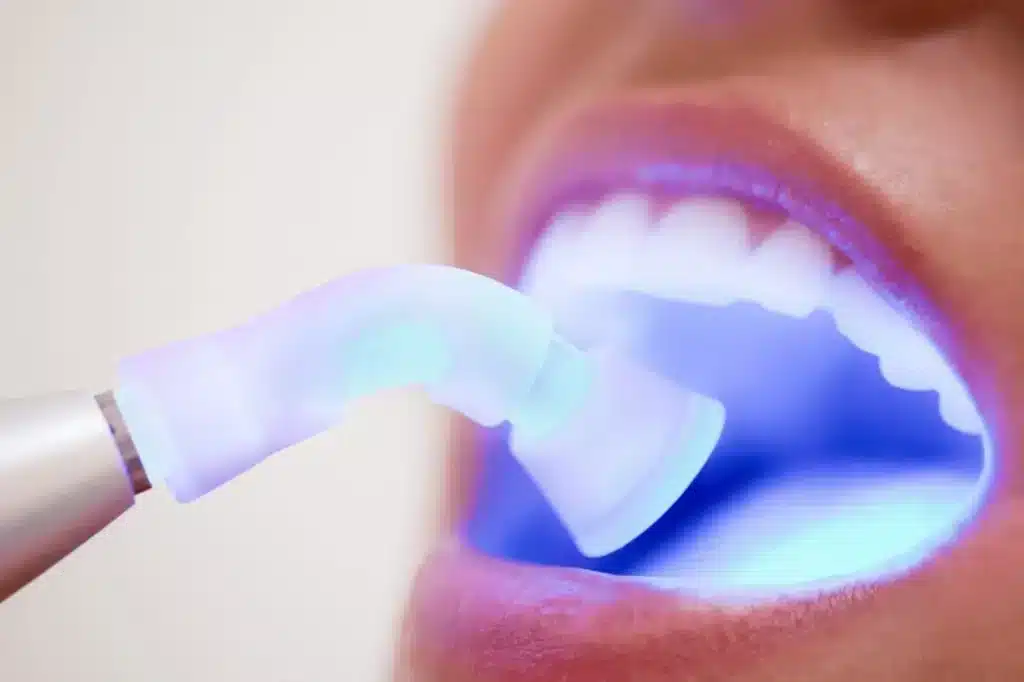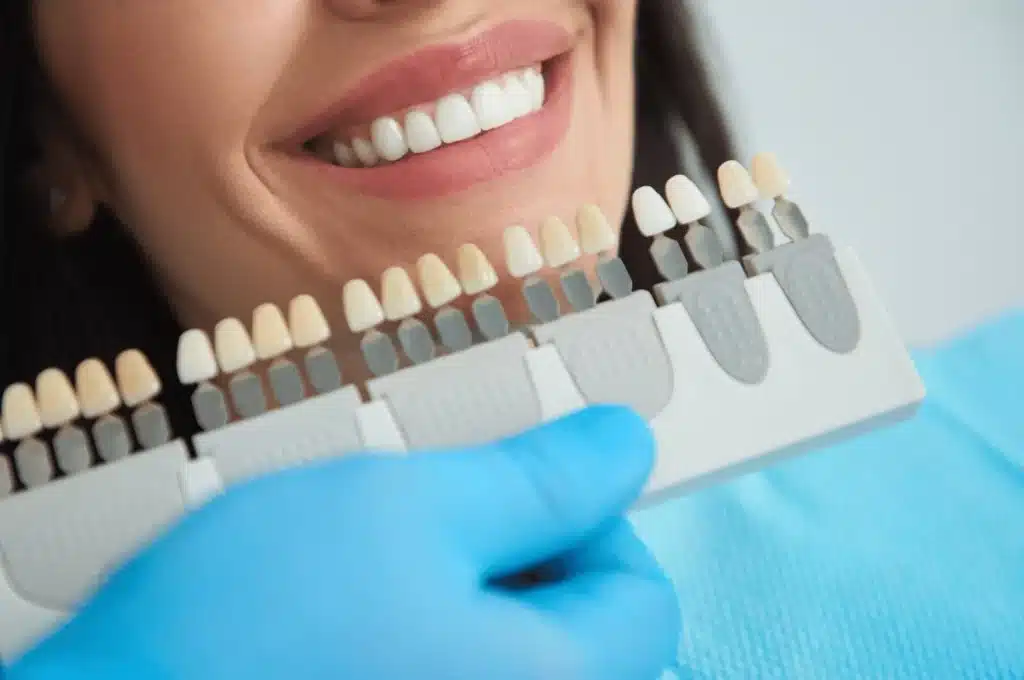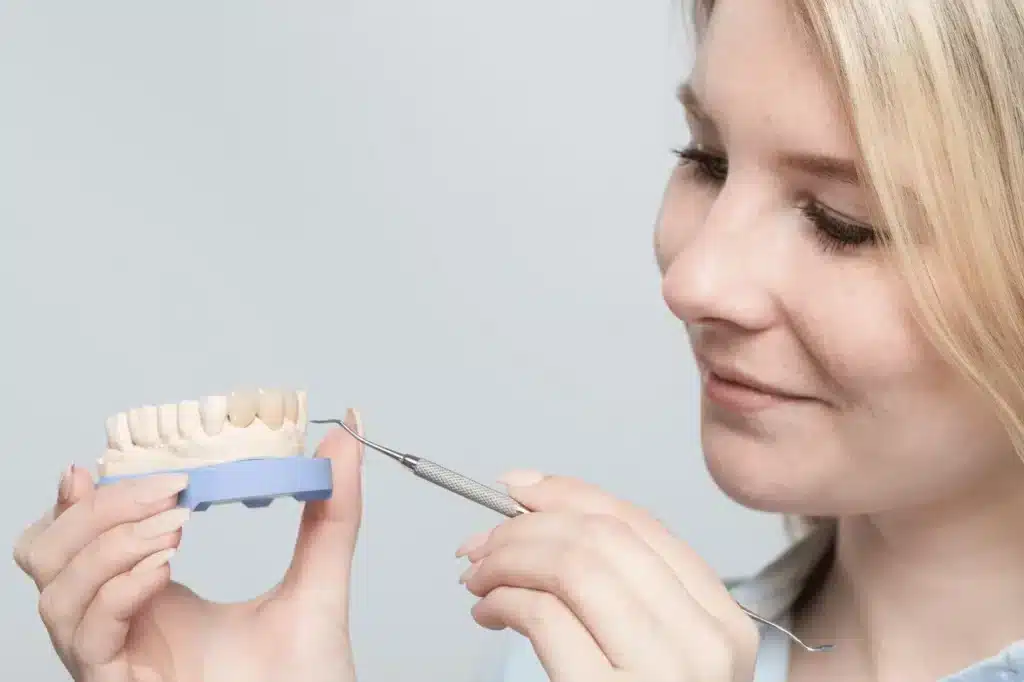Do you know you can fix your teeth problems and improve their function? Read about restorative dentistry and its dental procedures.
Restorative Dentistry
Restorative dentistry is fixing or replacing teeth to make your mouth healthier and help you chew better. Regular dentists, often called family dentists, do this kind of dental work. Some common examples of restorative dentistry are crowns, bridges, dental implants, and dentures.
Required For
People might need restorative dentistry if they have:
- Cavities or tooth decay.
- Teeth that are damaged or broken.
- Missing teeth.
Difference Between Restorative and Cosmetic Dentistry
Restorative dentistry is all about making your mouth healthier and work better. Cosmetic dentistry is more about making your smile look better.
Sometimes, specific dental procedures can do both things – they can make your mouth work better and your smile looks nicer. This is called aesthetic restorative dentistry. For instance, a dental crown can help you chew properly, and it can also make your smile more even.
Importance of Restorative Dentistry
Restorative dentistry is crucial because it helps you maintain good oral health for a long time. Your dentist can repair your teeth that are damaged or have cavities. This makes it easier for you to eat, talk, and chew properly.
Procedures
There are various types of dental fixes based on what your teeth need:
Fillings
When you have a small hole in your tooth from bacteria, it’s called a cavity. Dentists use fillings to fix smaller cavities. They remove the decayed part of your tooth and fill the hole with a material that matches your tooth color. This stops the cavity from getting worse.

Crowns
Crowns are used to fix big cavities or broken teeth. They’re like caps that cover your entire tooth. To put a crown on, the dentist has to remove some of your natural teeth, like shaving part of it, and then place the crown over it.

Inlays and Onlays
Sometimes, when you have a big cavity that’s too large for a filling but too small for a crown, your dentist might suggest an inlay or onlay. These are custom-made fixes that fit perfectly into your natural tooth. Your dentist will attach them securely.
Inlays and onlays are similar. An inlay fills the space between the edges of your tooth, while an onlay covers those edges.
Root Canal Therapy
When a cavity or a crack in your tooth goes deep enough to reach the pulp, it can cause a painful infection if bacteria get inside. In such cases, you need a root canal.
Dentist removes the infected pulp and nerves inside the tooth during procedure. Then, they clean and inside the tooth and fill dental material called gutta-percha. Afterward, they put in a filling to seal the tooth and keep bacteria out.
Most of the time, people with a root canal also need a crown to make the tooth stronger and more secure.
Bridges
Dental bridges fill the space between missing teeth. It includes fake teeth with crowns on each end. Your dentist shaves down your natural teeth on both sides of the gap, and then they attach the bridge. Crowns fit over your natural teeth, and the fake teeth fill the space in between.
Dental Implants
A dental implant replaces a missing tooth’s root. After your dentist attaches a crown to the implant, it works like a natural tooth.
Dental implants can support crowns, bridges, or dentures. The good thing is that they don’t require changing your natural teeth, so many dentists think they’re the best way to replace missing teeth.
Dentures
Dentures replace missing teeth. Complete dentures replace all the teeth in your upper or lower jaw. Partial dentures replace some missing teeth in different spots. Dentures sit on your gums, and the jawbone under them holds them up.
You can also choose implant-supported dentures, which work like regular dentures. But instead of just resting on your gums, they attach to dental implants. This makes them much steadier than regular dentures.
Advantages
- Restores oral health.
- Improves chewing ability.
- Gets rid of dental pain.
- Reduces the chance of future dental problems.
- Enhances the look of your smile.
Risks
- Common risk of sensitivity or discomfort after the procedure.
- Rare risks include infection or allergic reactions to materials.
- Dental restorations are generally safe, but crowns might chip or come loose.
- Ignoring deep cavities can lead to root canal therapy or tooth removal.
- Contact your dentist promptly if you have dental issues.
Conclusion
The blog guides you on restorative dentistry and how it repairs your smile. Many restorative dentistry procedures fix your teeth and give you a more confident smile. Always consult your dentist before getting dental procedures.
Contact Dentalsway for more information on dental procedures. We are here to help you get a beautiful smile.


